From: Melrose to Innerleithen
Distance: 17m / 27km
Cumulated distance: 804m / 1294km
Percentage completed: 68
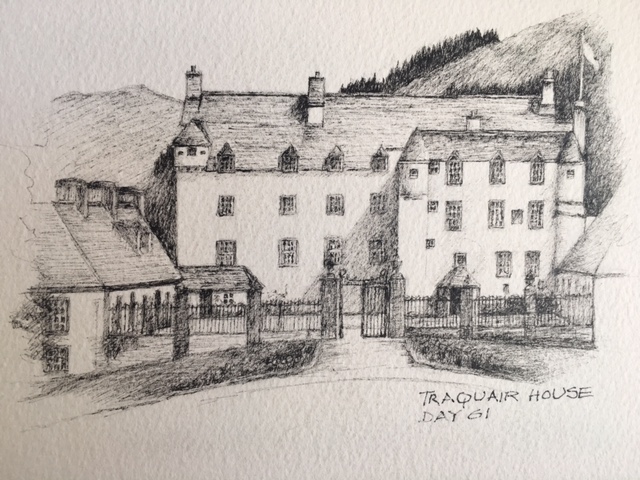
There were highs and lows to yesterday’s walk. It was the third in a row of 17 miles, which normally wouldn’t have fazed me but the tickle at the back of my throat, that had been hanging around for days, decided to develop into a full blown cold. Everything became slower and a tad more difficult and those characters Good and Bad Julie returned to sit on my shoulders, alternately suggesting I hang in there .. and I get a taxi, just for the one day. Good Julie just about won over but it was a close fought battle. It took the cavalry, in the form of Aussie friends, to get me over the line at the end of the day.
One of the big highs yesterday was waking up in the lovely Burt’s Hotel in Melrose. The food had been inventive and terrific; the hospitality warm and generous. And then to top it all, the owner Nick, donated the cost of the accommodation and breakfast to SANE. A fabulous start to the day. http://www.burtshotel.co.uk
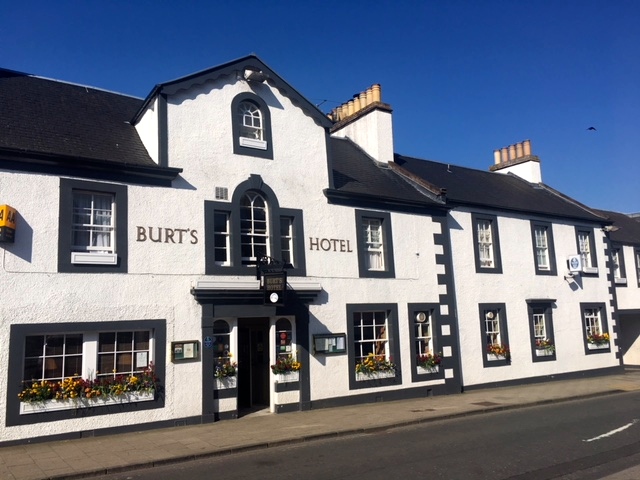
Beautiful Burt’s
Melrose is famous for its abbey, along with Jedburgh, Kelso and Dryburgh. One of the delights of this journey has been seeing places which I know I will come back and see at leisure in the future. The Borders Abbeys Way is a walk which takes in all the abbeys and is most likely at the top of that list. The whole town is lovely. I took a winding route out towards the river so that I could see the abbey, the rugby club where Sevens began and also St Mary’s where Barney was at school.
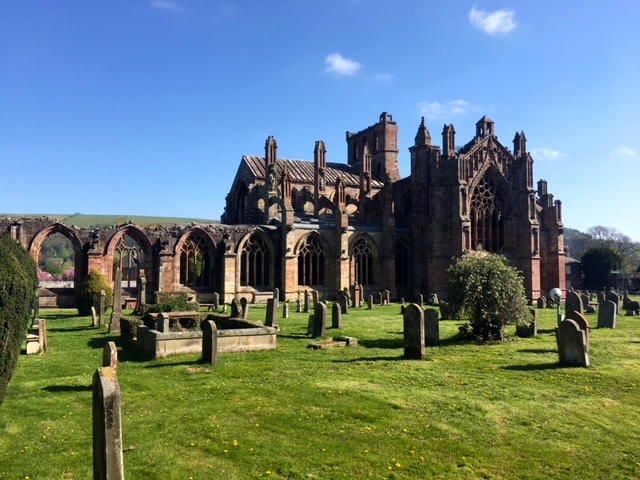
Melrose Abbey
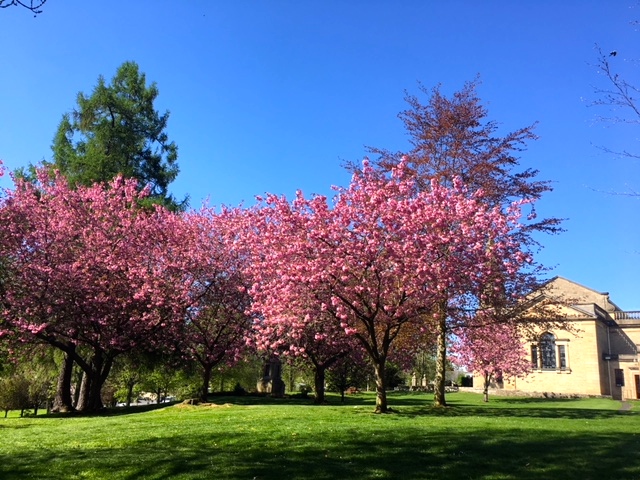
Parkland in Melrose
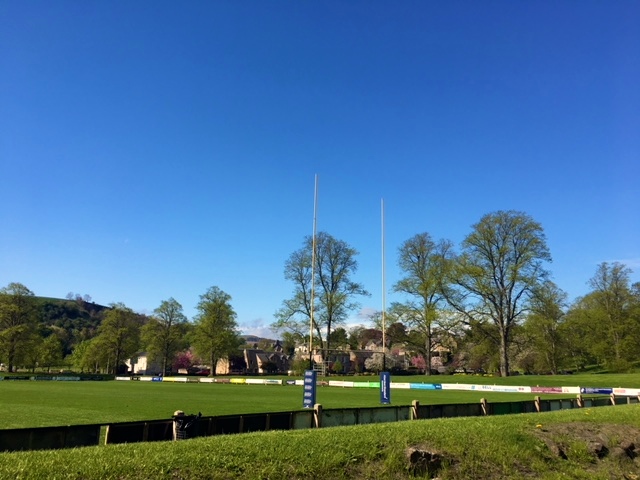
Where it all began
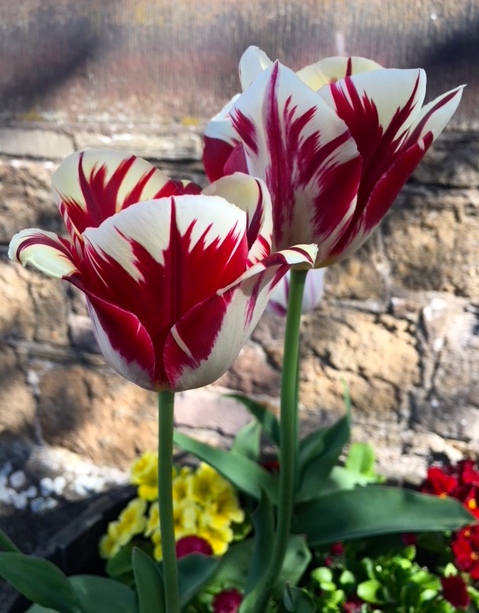
Exotic tulips along the way
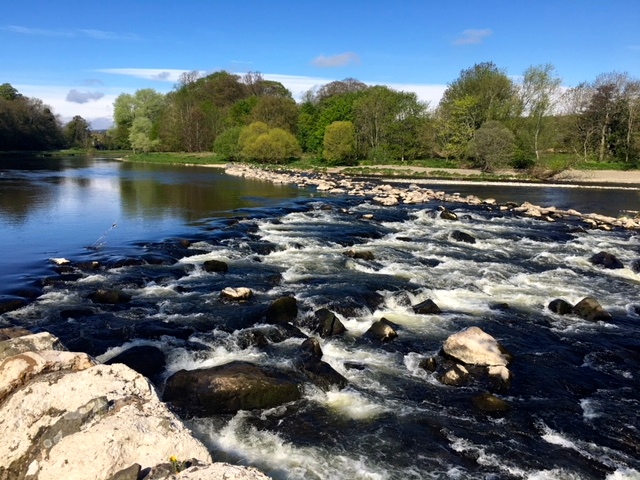
And eventually down to the River Tweed
The Tweed is one of the great salmon rivers of Britain and the only river in England where a licence is not required to fish. I saw a good number of anglers trying their luck yesterday, standing in the middle of the river, wearing waders. They made for a picturesque sight.
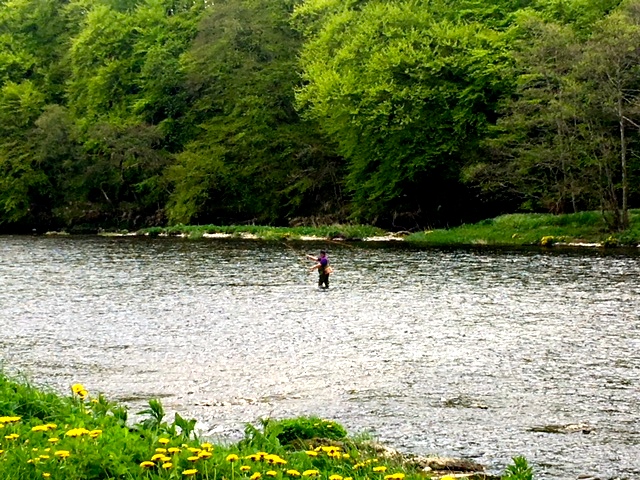
Casting for salmon
In parts the Abbey Borders Way shares its path with the Southern Upland Way, which was to take me inland across the hills to Innerleithen. The sun shone in the morning, making for dappled shade on the tree-lined riverbank walk.
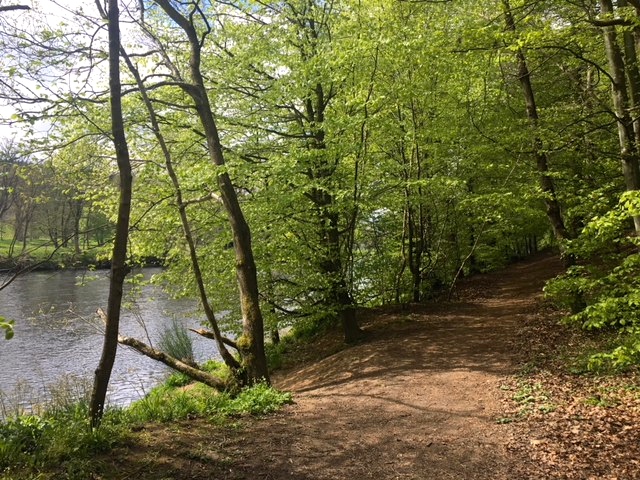
Spring greens along the river bank
I skirted past Galashiels and ate lunch in the park by the Old Town. Murphy, the black lab, and his owner Jackie, kept me company for ten minutes. We had another of those incidental chats about mental health.
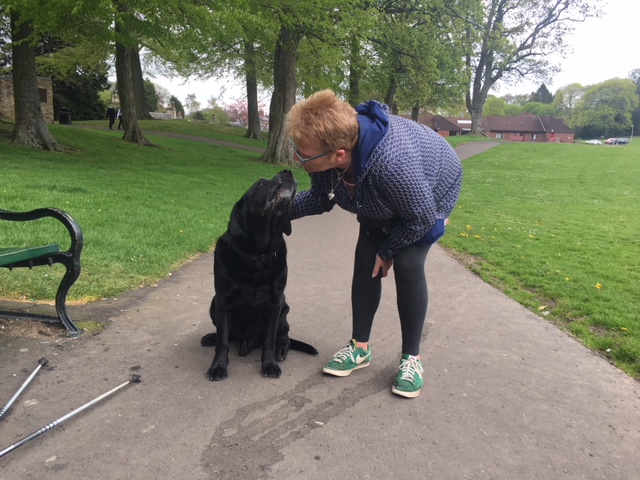
Murphy and Jackie
From Galashiels there was a stiff turn upwards, over Hog Hill to rejoin the Tweed. Before the wind started blowing a gale I was treated to a clutch of playful lambs who came racing towards me, convinced either I was their mother or I had food. Once they’d reached me they stopped, took stock (seeing neither their mother nor food) and immediately turned tail.
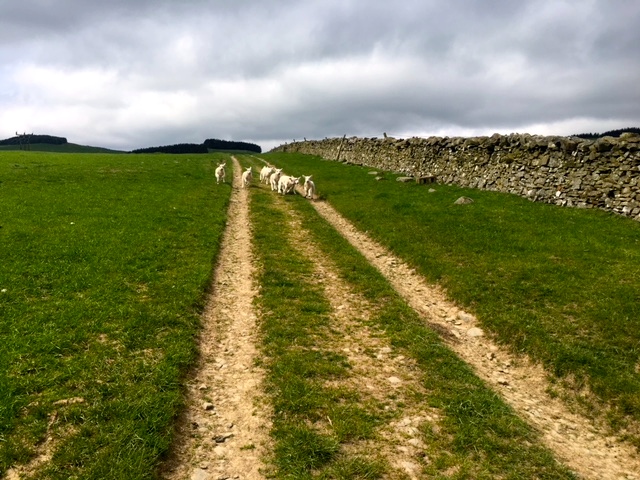
Mum, yay! Food, yay!
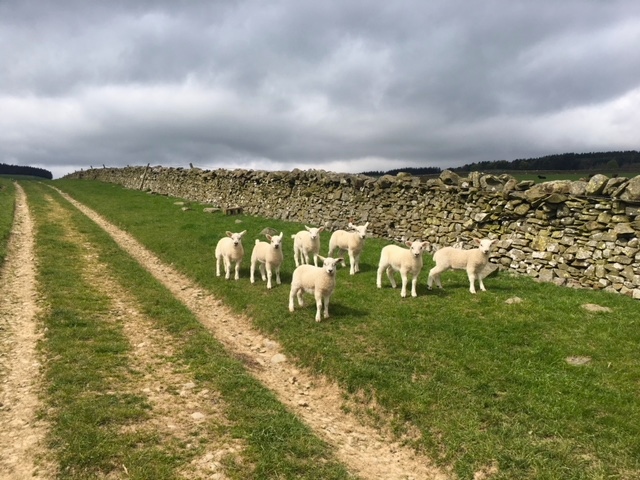
What??? No mum, no food???
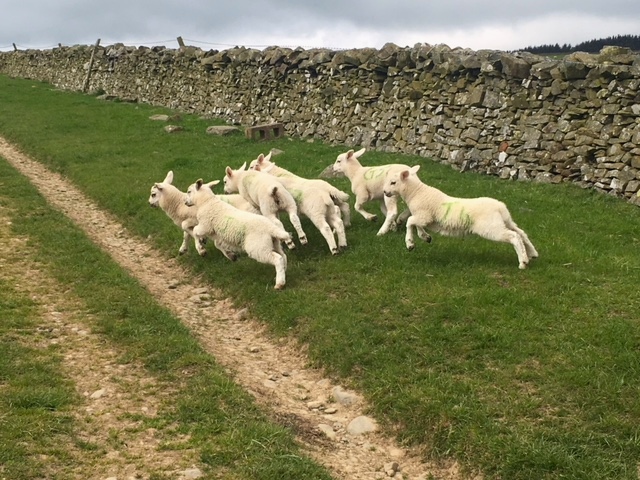
Scarper!!
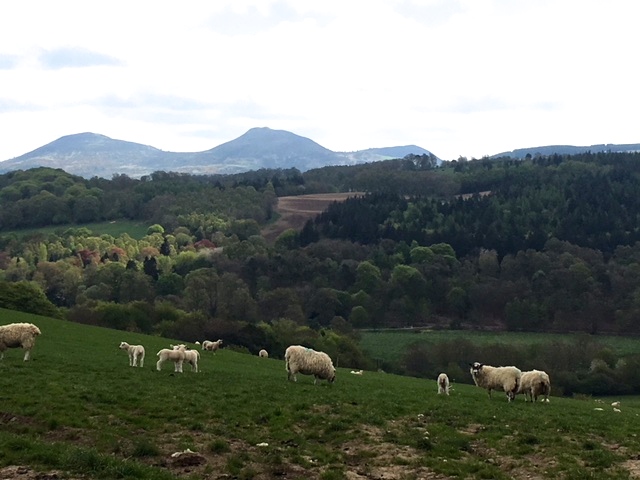
View from the top
There was a copse of densely planted trees at the top of the hill. It was a magical feeling walking through such a dark, silent place. The sun had very definitely taken its leave and raindrops began to fall.
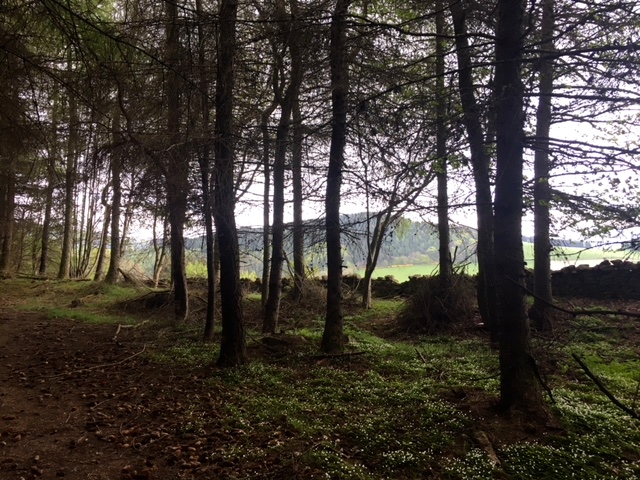
Copse at the top
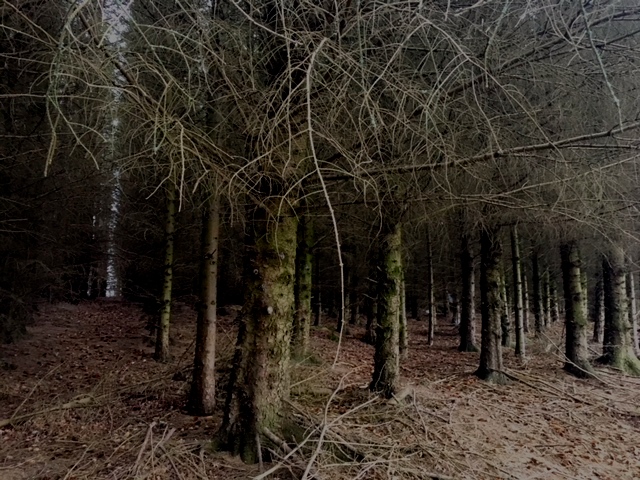
Thick, thick forest
Descending past Calfshaw towards Fairnilee Farm I walked through heady bluebell woods, deliciously fragrant even through my dripping nose.
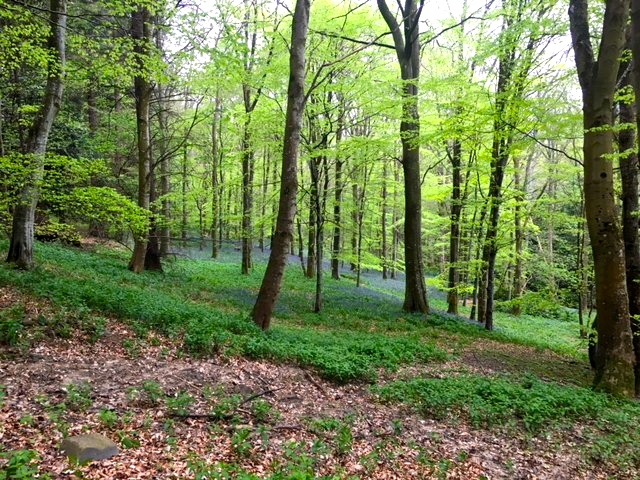
Carpets of bluebells
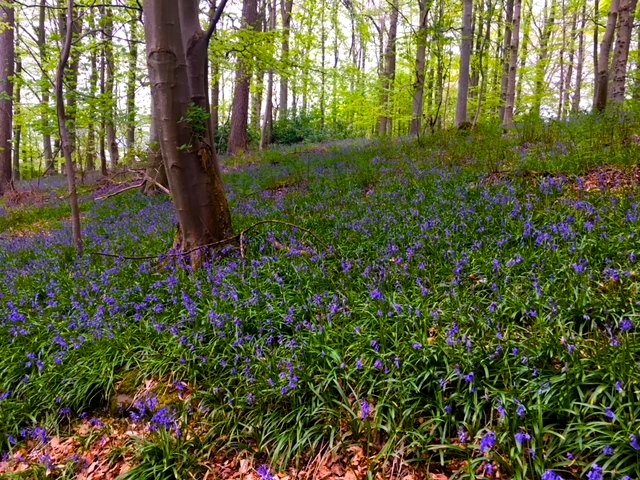
More of the wonderful same
Once I reached the river I had a decision to make. I’d originally thought I would continue on the Southern Uplands Way which took the route of an old Drover’s Road. But the wind and the rain and my protesting body meant that I plumped instead for the little B road, which ran more or less parallel to the Tweed. There was a lot of trudging but some very cute treats along the way ..
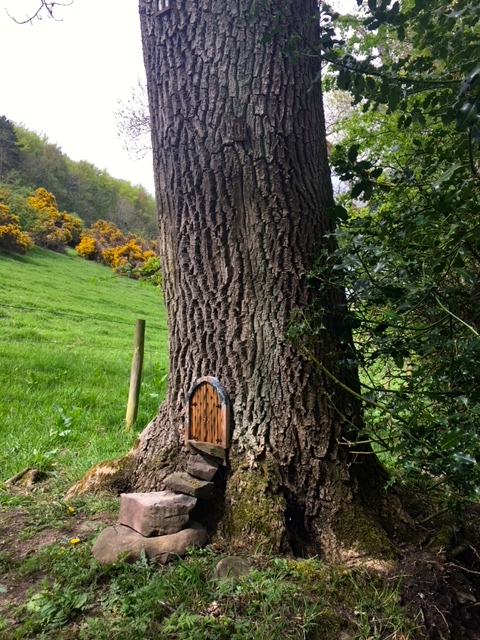
Imagine the stories behind this one!
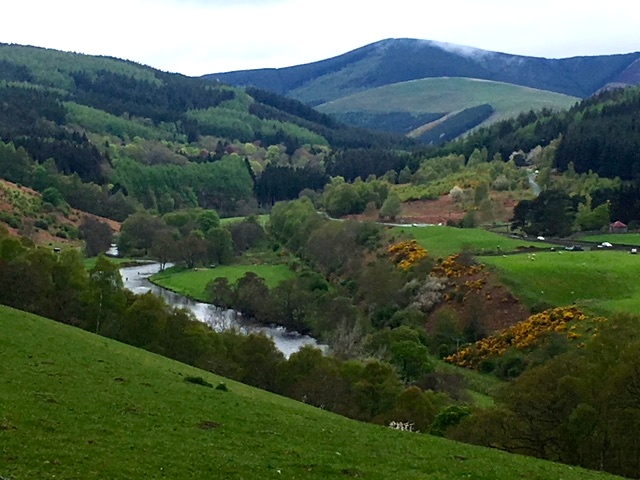
Glimpses of the river as the path climbed higher
But undoubtedly the biggest treat was friends, Ilse and Tigger, driving up behind me to join me for the next couple of days’ walking. The timing could not have been better. Ilse pulled on her walking boots to finish the last few miles with me while Tigger took my pack. What good friends. The afternoon started to draw to a close and the evening light cast longer shadows across the landscape.
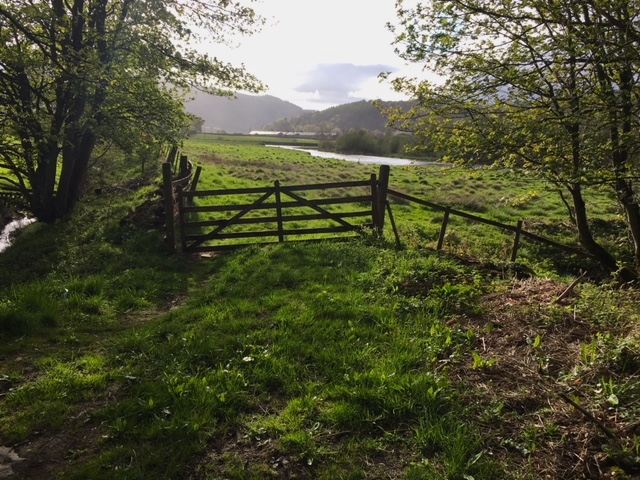
Early evening
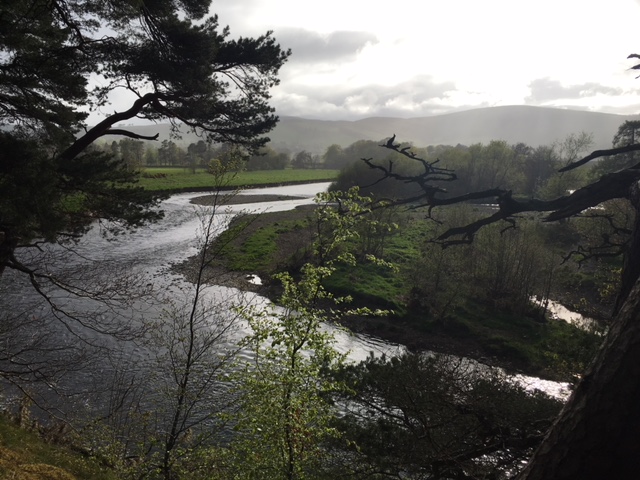
Coming in towards Innerleithen
Innerleithen nestles among gently rolling hills. It’s home to Traquair House, Scotland’s oldest inhabited house, dating back to 1107. It was also my bed for the night. A complete splurge for me and a hotel steeped in history. It was once a royal hunting lodge and has played host to no less than 27 Scottish kings and queens over the years.
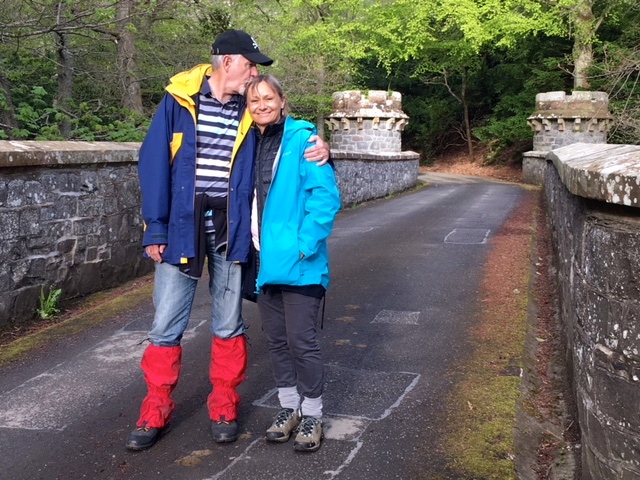
The Scarlet Pimpernel and accomplice reaching Traquair Castle
The 4th Laird of Traquair became the Captain of the Queen’s bodyguard to Mary Queen of Scots. She was one of the monarchs who came and stayed at the house. In fact the cradle in which she rocked her baby son James, is still in the house. With each generation improvements and enlargements were made to the house, the most extraordinary being the diversion of the River Tweed, which was deemed a little noisy in its original proximity to the house. The catholic tradition remained strong with each generation, despite the threat to life this could pose. Not unlike other old papal households, for many years mass was said in a small secret chamber on the top floor. A secret escape route for the priest was hidden behind a concealed cupboard and led down the old stairs. It continued to be used until the Catholic Emancipation Act in 1828.

Heaven
We once rented a 16th century house in Kent called Porter’s Hall. It too had a secret passage which was concealed behind a false bookcase in the drawing room, leading up to the top of the house. We had a lot of fun with unsuspecting guests!
The Stuart family continued to live in the house until 1875, when Lady Louisa Stuart died unmarried and without children. Traquair was then passed to the nearest cousin, Henry Constable Maxwell of Terregles. He added the name Stuart to his own and so continued the Stuart dynasty. Like any other grand house, Traquair went through crests and dips of fortune and misfortune, with some owners striving hard to undo the the financial debt inherited from their parents and grandparents. The house had its fair share of eccentrics too. Charles the 8th Earl did much to modernise the estate but thwarted his family’s attempts to find him a wife by secreting stinging nettles in the beds of would-be female admirers!
In a fantastic instance of enlightenment, the Labour government after the 2nd World War, awarded grants for custodians of historic houses for their restoration. Traquair did well from this initiative. But it was really Peter, along with his wife Flora, who inherited the house in 1963 who dedicated 30 years of their lives in developing Traquair into the tourist attraction it is today. This included bringing the 18th century brewery back to life and becoming the first domestic brewery in the UK for many years to hold a commercial brewing licence.
Today it is Catherine, 21st Lady of Traquair and her husband Mark Muller QC who ensure the Stuart stronghold, is kept in such fine order.
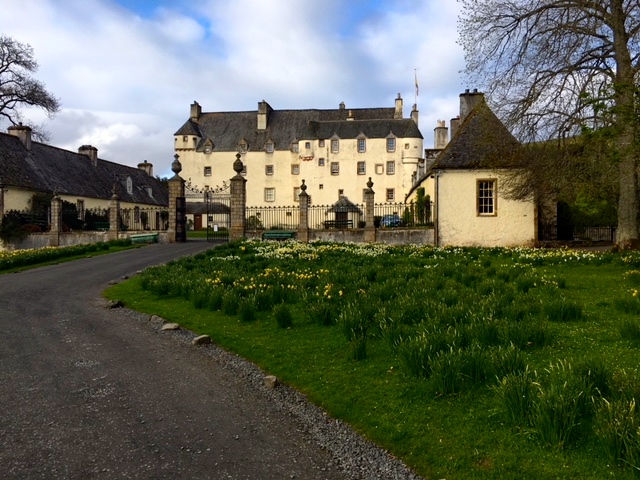
Bed for the night
Black Dog Tails
Hazel is another gorgeous Kiwi guide-dog, sitting perfectly undistracted while the chook wanders around the garden.
![]()

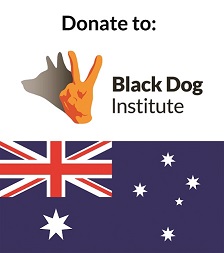
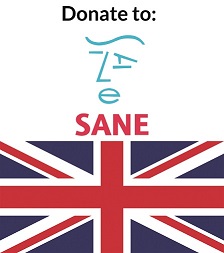
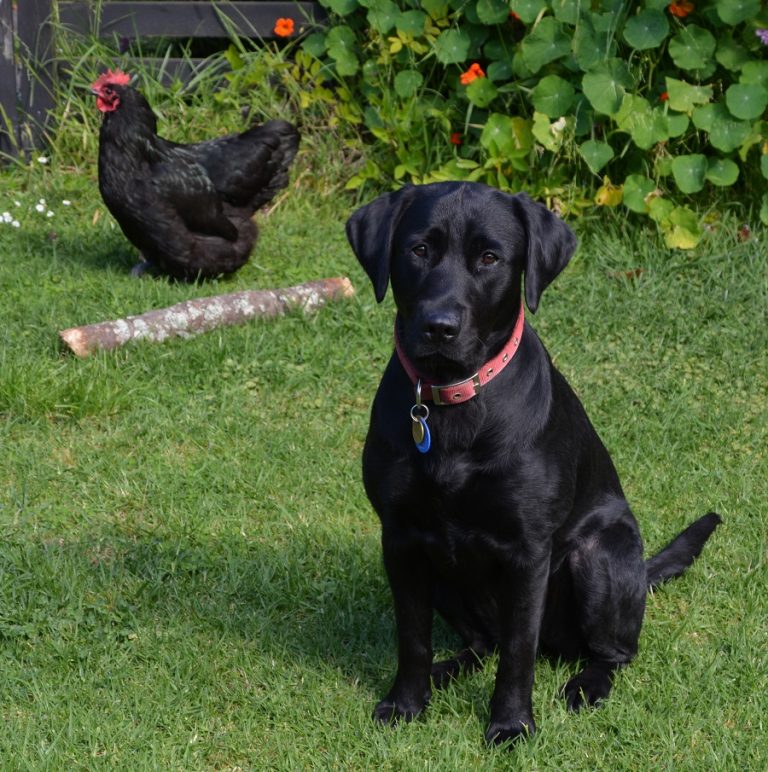
Sorry to hear about your cold Jules – hopefully a good nights sleep in that beautiful house will help. Love your photos of the lambs 😃
Thank you! The sleep did help and I can feel the cold working its way out of my body .. would like it to get a move on!
I had a b and b at Traquair and they ferried me to the Traquair Arms a Innerleithen for a meal in the evening. At Traquair there is the legend of the gates – from my journal:
“I passed the famous Bear Gates at Traquair. The legend goes that Bonny Prince Charlie passed through the gates on his retreat and they were then closed, never to be opened again until there was a king of Scotland on the throne. In my short time at Traquair I had two first-hand accounts of the gates being opened in recent times! “
I smiled at your comment! I wonder which dignitaries the gates were opened for .. or perhaps it was just a delivery from Amazon!
You’ll be fine now
You’re in Scotland
Enough said
Looks absolutely stunning
Hope your cold gets better
When the going gets tough, the tough get going
You can do this
There are so so many positive happenings
And they’re all there to keep you focused on your end result.
I’m dazzled by your commitment and resilience
You have what it takes
Believe it!
Nicky, what a great message .. I certainly feel buoyed up by the strength and encouragement being sent across the light waves. Thank you.
I’m glad you have luxury accommodation and loving companions to speed your recovery Jules. What wonderful photos of spring lambs, bluebells, the River Tweed, and a darling black lab. Wishing you better soon.
Thank you, Amanda. Already feeling considerably better after a great afternoon nap .. that’s the luxury, in my book, as well as the company of good mates. xx
So very well done good Julie!! Thank you for showing us how beautiful Scotland can be…that Abbey Walk looks very tempting.
Look after that cold and enjoy your rest day. Lots of love xx
Thanks Frannie .. I’ve got a whole lot of nothing planned for tomorrow! xx
Those last two miles of the the day are the hardest, true grit and determination gets you through. It seems as though you’ll never get there, but then the relief is all worth it. Great effort so far Jules, JOG here you come…
You’re so right. And then once you’ve had a cuppa and a bath, you can’t think what all the fuss was about. Thanks for your message, Phil.
Hi Jules, so sorry to hear you have a cold and hope you are feeling better soon. It is hard enough in good health to get up each day and walk all those miles. 😐 I have just caught up on your past few days and have really enjoyed your photos. It is amazing that so many black dogs come into the picture, it must help to give you the impetus to carry on. Take care of your cold, the finish line is getting much closer. xx
Thanks Marilyn .. sure it’s just a temporary blip but it did make me feel a bit sorry for myself. Great to have a rest day tomorrow to catch up on some sleep. x
Can’t believe its over a week since we left you at Hadrians Wall. It was a joy to join you for a few days on your truly inspirational walk. I am loving all your photos of the borders, one of my favourite places. Hope the cold improves and may the sun shine and the wind blow gently on your back for longer than it did in England. Lots of love Steve and Tikka x
Thanks Steve .. it was a really fun couple of days, wasn’t it. Loved having you along and Tikka was a darling. Love and pats. x
Beautiful pictures, and remain impressed at how you find time to write the blog everyday! Also super impressed by your progress…no taxis please, you will not feel the same at the end!
Tony
Thanks Tony. Taxis .. banish the thought! Actually, would have been just about impossible to find one anyway!
Forgive me if this is the second reply .. thanks for your message, Tony. All ideas of taxis banished! x
Hi Jules,
I have stayed in Burt’s on many of Jebs’ fishing trips to the Tweed so loved your pictures today. It is just amazing to think you have reached there by walking from Cornwall. I really hope your cold doesn’t develop but even so dig deep you are doing so well. We are going to be near the Helmsdale river for a week from 27th May -3rd June. I think you may be walking near by. Jebs is fishing but I would love to join you for a day or 2 if it fits.
Hi Kay .. Burt’s was a real highlight. I saw several people fishing on the Tweed. Looked so tranquil. June 3rd may well work .. let’s keep in touch and make a plan. x
It seems amazing that it was only a week ago we left you to go “north of the wall”. As we drove south we were deeply impressed by the reality of the distance back to Cornwall. Your journey is proving a real feat of endurance ( the love of lambs I mean not the walking..!)
As Nicky says it is all utterly dazzling. You continue to chew up the miles and the countryside continues to fuel your days with incredible landscapes.
Very inspiring ….and thank again for letting us be amongst it for a little bit. We are now back in the audience willing you on..
The days with you both, Nick, Joanna, Steve and Tikka were absolutely magical. It’s me who should be thanking you for joining me! Hope all your weddings were fun. Jx
As I mentioned here earlier on in your walk, from my experience one always encounters the odd low point day the symptoms for which usually vanish by next day, and THAT IS NORMAL IN MY BOOK, so I reckon that’s what you experienced, and hopefully not a recurrence of a previous problem that you have alluded to on this blog.
Thank you, Conrad. Very good to get your reassurance as a veteran walker!
What glorious photos Jules. And how nice to have friends to share the walk when not feeling the best!
Thanks Angie .. good to have friends around, you’re quite right!
Ha ha, I was wondering when those two scoundrels would catch up with you! Beware the late night drinking sessions!
Yes, late breakfast this morning is testimony to their appearance! Your brother says that the beer has been well and truly researched!